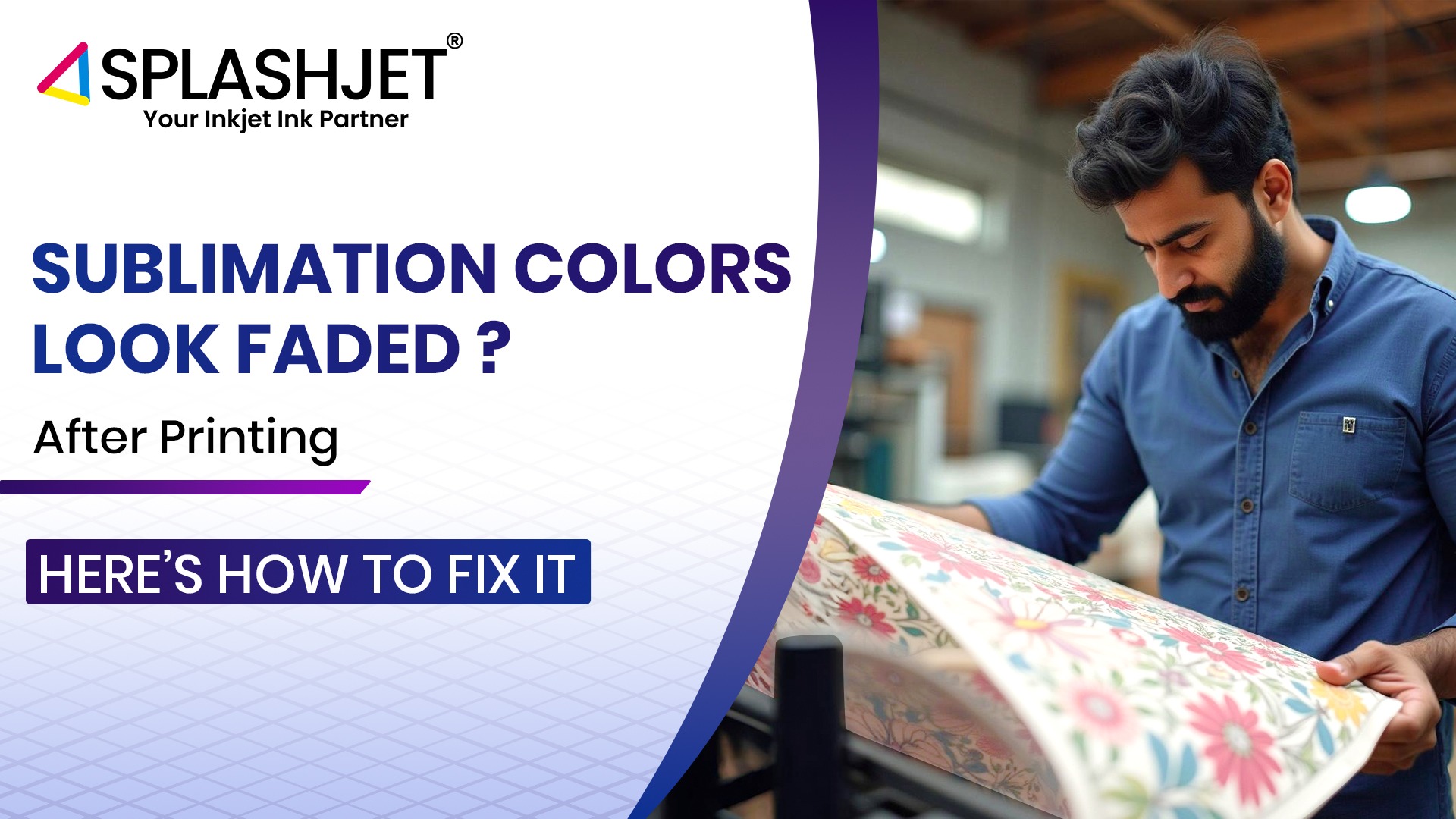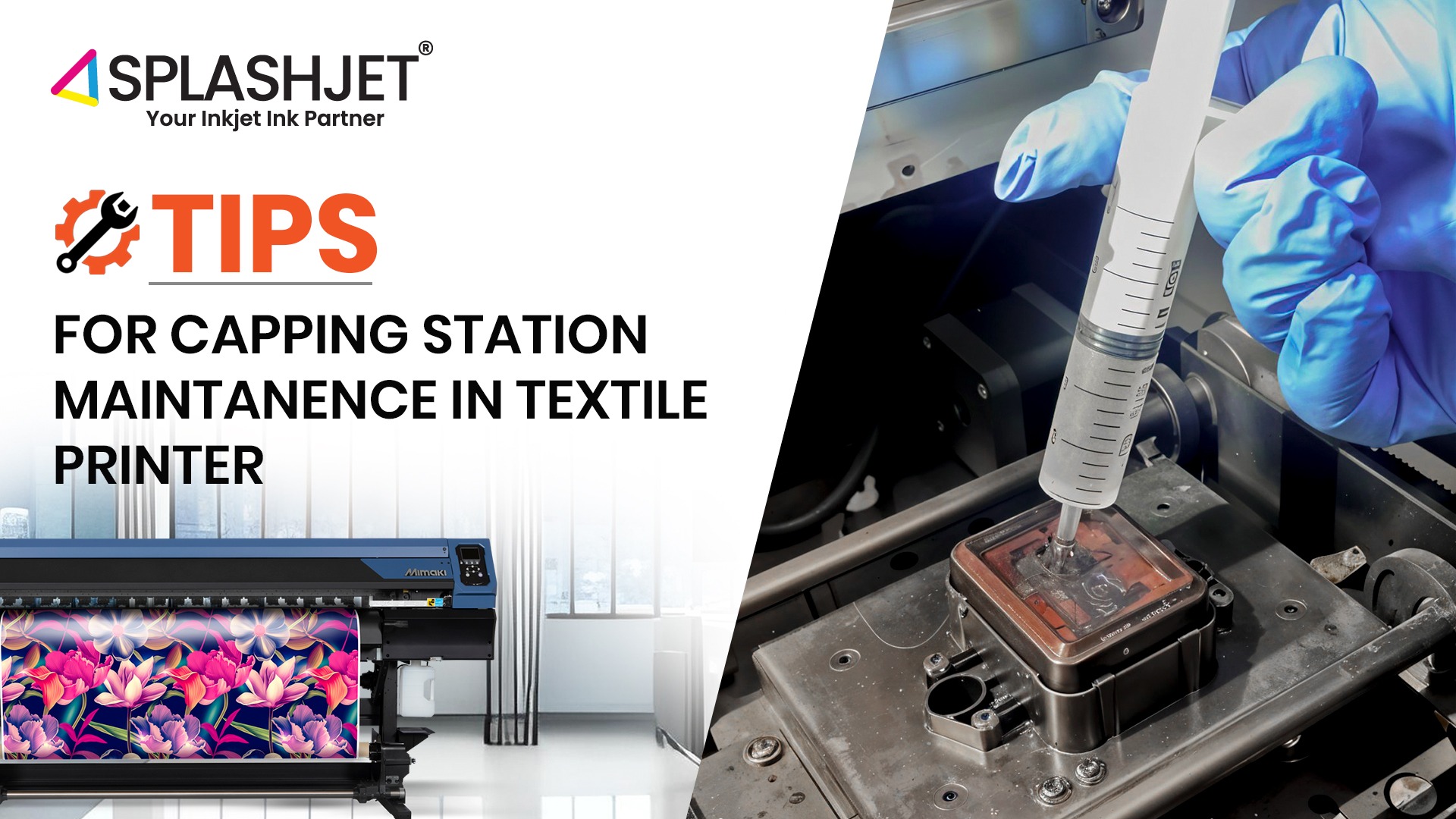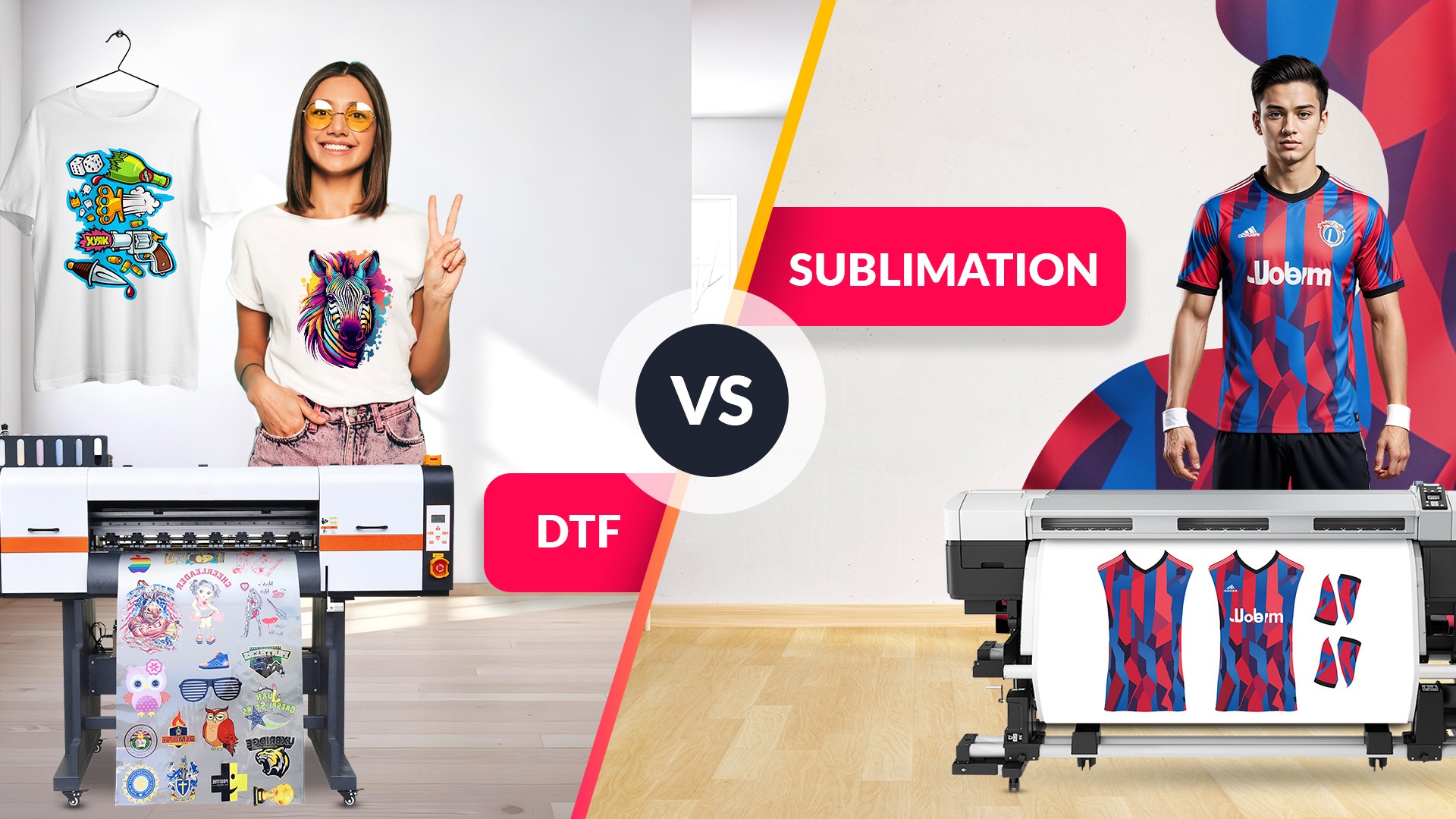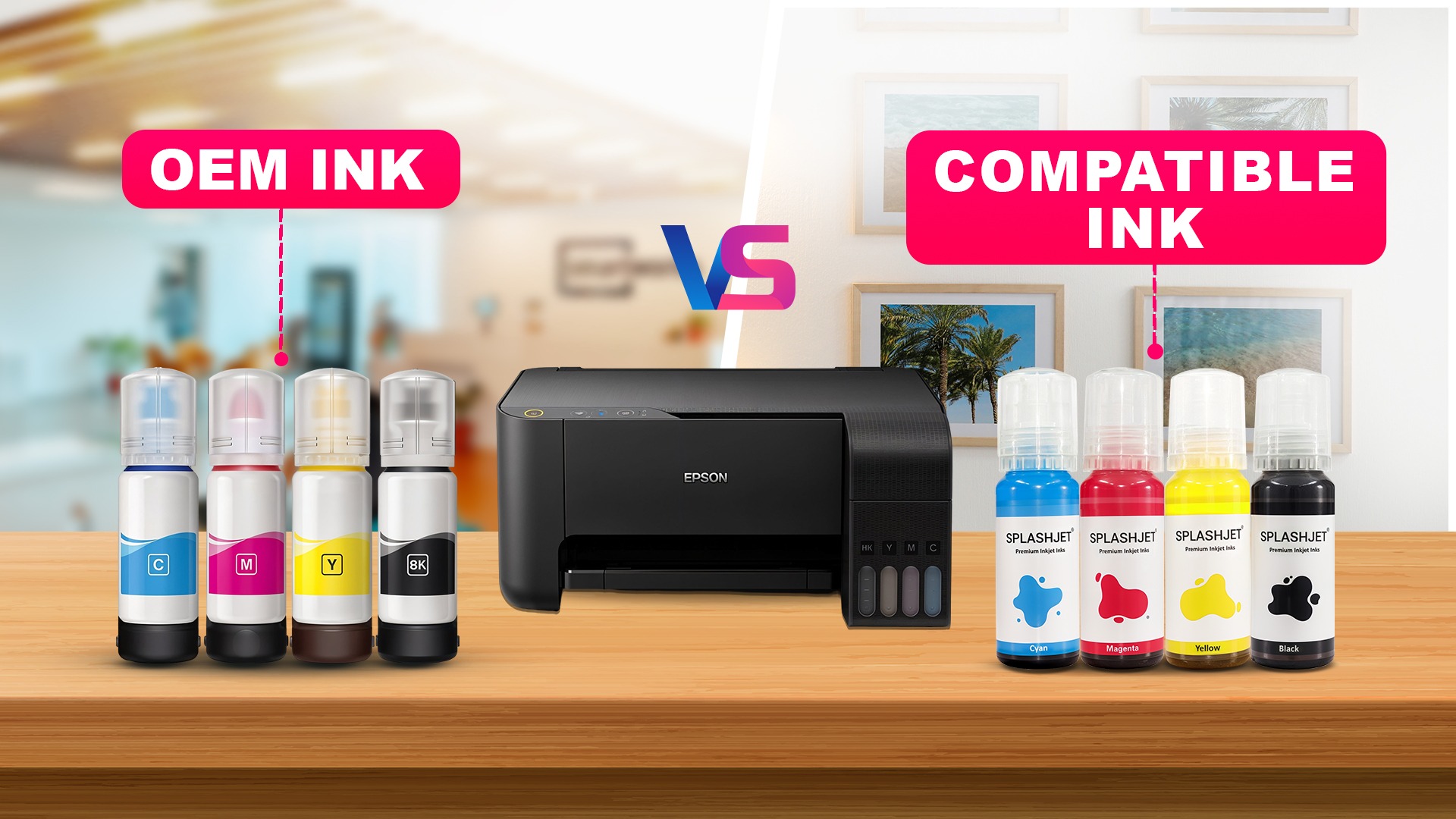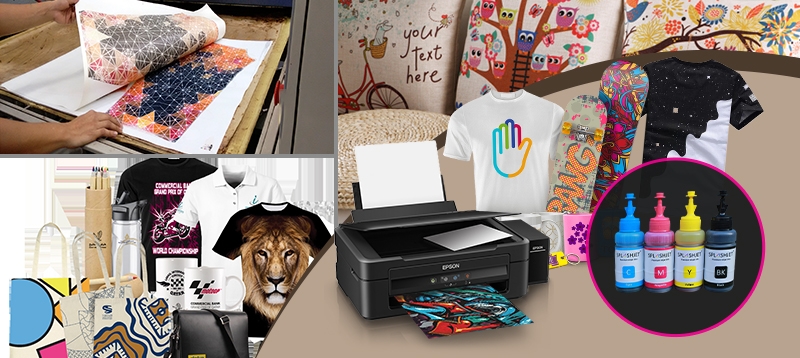
This article is focusing on information to help people who want to get into sublimation business. Better understand the process and also give them an idea of what to expect along the way. We’ll be covering what different types of equipment are available which suits your needs best for making money with sublimation business. This will include design software, printer’s paper, and heat presses. We’ll also talk about different accessories and how they prevent common issues that can occur during the production process.
Science of Sublimation
The people who aren’t too familiar with sublimation probably googled it or looked at it on YouTube and it looks like a pretty basic process you have a transfer paper with a design on it that you applied to either like a shirt or piece of metal or something like that and add some pressure with some heat and they take it out and all the sudden there’s great image on it. But what’s really happening when that process is going on because there’s a lot of different processes that happen the same way but for it to be true sublimation what’s really going on a scientific level?
The term sublimation actually means solid form goes straight from a solid to a gaseous state. The liquid form there would be like ink in the cartridge when inks are in its liquid form. Once they’re sprayed onto transfer paper by means of the printer it and it dries out the solid form. Once we put that in the heat press we put it on the substrate which is it would be like your shirt or anything like that. Once you attach it to that substrate and you add Heat at a high rate and pressure it goes straight to a gaseous state and then these gasses attach to your substrate.
How is it Attaching to Your Substrate?
Everything that’s able to be sublimated has a poly coating or is made out of polyester fibers, so like your shirts are all polyester and hard substrates are coated with a poly coating. When that coating heats up it opens up pores in this coating and that’s where the gas goes into and when you take it off that heat press it cools down it’s trapping that ink inside the coating.
In the following image demonstration, there are two pieces of metal, you could tell that sublimation is all often referred to as dye sublimation. So the ink for sublimation is a dye which means whatever the base color of your product is going to kind of show through the metal.
So as you can see in the following image a white piece of metal and gold piece of metal. These are the same image on each piece of metal but obviously you can see on the gold that yellowish is through showing through and on the text it’s also golden and that’s because of using CMYK printers so they are not able to print white and that’s why near about 95% of stuff starts out white because people are not actually able to create white color that you leave in your design artwork that’s white is it’s just going to be the base color of your substrate.

When it fuses to this coating is really resilient so you can’t scratch it off. It’s not like a surface it’s not like ink on the surface of anything so especially with shirts and stuff like that, it’s not going to crack or fade or wash out. the downfall to it because it is a dye process you can’t print on dark objects so for instance like a dark t-shirt because you can’t print white and you can’t lay down any base color white to print on. So dark t-shirts aren’t available to do but besides that, it’s really resilient so it’s not going to scratch or crack or anything like that. So that’s definitely a plus.
Design Software
For some people who aren’t familiar with design software’s this can kind of be a steep learning curve and kind of deter them from getting into sublimation. It can be kind of intimidating there are people who go to college and take classes for years on how to use a design software. Every design or with every new endeavor there’s going to be a learning curve. If you are serious about getting into sublimation invest some time into learning a design software program.
Know More About – Selecting Right Printer Settings
There’s a lot of useful resources out there so there’s a ton of videos on YouTube on how to use like Adobe Illustrator or CorelDraw or anything like that. So take advantage of that. Also, you know maybe you could take like a college course or something at a community college. This can save a lot of time and headache just even if you can learn the basic tools and then just learn a tool day and build on that and eventually you’ll be using the program in no time.
There are three main programs that should use are as below
Adobe
1. Adobe Illustrator and Photoshop
2. CorelDraw
About 70% of customers use CorelDraw at this time. It’s not necessarily because it’s the best program but a lot of customers started out layering and it was just an easy jumped sublimation they just adapted that. So CorelDraw is a little more user-friendly than Adobe Illustrator or Photoshop but they all work really well.
If you are going to get into sublimation business you are going to pick up a design program with Corel or any of the Adobe programs right off the start because if you’re still going to be a learning curve with the creative studio, Corel and Adobe are just a little more professional. If you are going to get into it and you are going to learn to software just start with Corel or Adobe it’s better in the long run for you.
Sublimation Printer
Epson desktop printers are the most accepted and easiest one for the dye sublimation printing business. You have lots of ink options to choose from, a wide range of printers, excellent print quality, and good color reproduction. Besides Epson Ricoh & Brother printers are available. Ricoh has a strong pedigree to sublimation business based on the cobranded printers sold through Sawgrass. Brother is popular as the printer option in the pockets of the industry. All these printers you don’t need RIP software to create good quality results.
Sublimation Paper
So after print, you will obviously have to print on your transfer paper so the next thing is the transfer papers.
Many sublimation papers sold in the market with various brands. The papers with a wide variety of features are available in the market. Select your paper for good release performance of the inks. The residual ink on the paper after the transfer should be minimum. Simultaneously the inks should be released gradually so that the sharpness of the transfer is there. It is important that the sublimation receptive coating is of consistent quality. Otherwise, you will not get good transfer results.
Heat Presses
There are a wide variety of heat presses of brands. Most of them come from China.
Clamshell Press Versus Swing-Away Press
This is a feature that you can find on all three of those different presses or a lot of presses out there.
Why it’s important to get a swing away over a clamshell.
Clamshell Press
Clamshell hinges at the back. If you’re ever going to sublimate on something that’s thick like an acrylic, for instance, the way that press closes it’s only going to make contact a little bit on the backside and it’s not going to be able to close completely. So you’re not going to get good contact across your substrate.
Swing-Away Press
Swing way picks straight up and down. It’s going to make full contact on the top of that thing and not be hindered by the thickness of it. It also swings off to the right so you can get it out of the way a little easier to work with.
The clamshell might have over the swing-away press is that room wise. if you are working in a small office and don’t have a lot of counter space the clamshell might be a little bit better just because it opens straight up and down. You don’t have to have room for it to swing off for the right.
Manual Press Versus Automatic
An Automatic Press
It uses air compression. Once the timer goes off it’ll automatically release the press. So say you press something for a minute 30, you have a customer come into the store and you start talking to that customer and you kind of forget about the press and pretty soon you’re hearing it go off and it’ll automatically really release that press.
Manual Press
Once the timer goes off you have to go back there and physically lift it up.
That’s a nice feature about the automatics. The downside to an automatic is that it uses psi so you can’t really get a good feel for pressure. So it’s hard to tell somebody a light pressure is and what a heavy pressure is just because you can’t feel it like a manual press.
Digital Press vs. Non-Digital Press
In case of the digital press, you can see your temperature rise and fall when you press ennui so when you first turn on your press it takes about 15 minutes to heat up 15 to 20 minutes. so you’ll see your temperature rise and once it gets to the point that you want it at it’ll be bet you but you can physically see.
If there’s anything mechanically wrong with your press sometimes you can tell by just looking at the temperature drop and raise. If it’s dropping like 50 degrees there’s definitely something going wrong there like your heating element isn’t keeping up.
It also has an automatic timer built-in with the digital press which on a non-digital press you would have to use like an egg timer which could kind of be a pain in the butt and also with the non-digital you just have to assume that it’s at the temperature you want and you don’t really know if it’s fully recovered in between presses.
Sublimating on Rounded Surfaces
How would you sell them in on a round surface for instance like a mug? So just sublimate on anything that has a curved surface that’s not flat you would need a specific type of press. So mugs for instance mugs are our highest selling item but to do mugs you have to have a specific press.
Mug Press
It’s got a cylinder heating element. What’s good about this is that it’s really accurate but for each mug, it takes about five to six minutes to do one mug which can take a long time. so that’s great if you only have you know 10 or 12 mugs to do but say you get an order of a hundred mugs 150 mugs and you only have a week to do it well in that case you might want to switch to a method which we call an eye wrap with a convection oven.
Convection Oven
So it’s a silicone wrap that clamps under the back thereof the mug and so you just wrap your transfer paper on it then you wrap the silicone wrap on their clamp it down and you can put six or seven of these in a convection oven. What’s good about that is you can turn out a lot of mugs because it only takes about 15 minutes or so of 15 16 17 minutes and you can get six or seven done at a time.
What can be hard about that is though is the convection oven is sometimes it’ll get cold spots in the oven. So it’s kind of hard you got to figure out where to move your mugs and I think the learning process might be a little harder. It just might be a little harder to use in general but you definitely your production time goes way up. So definitely consider that if you guys are looking into getting into mugs.
Accessories
Alright next we’re going to talk about some accessories so this is just a list of accessories that we use that we found over the years to help us be as successful as possible each and every time we go to press so we want to be consistent and we found that a lot of these items either help you know keep our stuff running properly or just help the process in general.
Teflon Sheets
Thin brown sheets of Teflon protect the bottom and the top of your press so the bottom of your press has a thick rubbery black pad and that can sometimes collect a lot of ink on it. Over the years probably gets torn up just from daily use so always put one Teflon sheet on the bottom just to protect that caching keep it clean make sure it’s not getting torn up and then we always keep another Teflon sheet on the very top.
If you’re laying your press you’ll have one Teflon sheet on the bottom in between you’ll have your Teflon or your substrate with your transfer and then another Teflon sheet on top. Basically protects your heating element from direct contact with your substrate.
In case anything was ever to melt on there you know you accidentally put something in there that wasn’t supposed to be on there or sometimes like with the metals they have a protective plastic coating and if you forget to tear that off that can that can melt to the bottom of the press or to the top of the press. So it’s this is just to keep your press clean and you know to increase the longevity of it.
Butcher Paper
It’s also referred to as n roll paper it’s basically just a thin scratch paper. You can substitute it for Teflon. It absorbs stray ink for us and it’s great for doing apparel. The reason it’s great for doing apparel or any double-sided item is that your Teflon sheets can often pick up a lot of ink. If you’re just doing a one-sided item that might not be a huge issue but when you’re doing something like a double-sided especially a t-shirt or something that’s all white those really pick up a lot of ink from anywhere they can.
Using the butcher paper just keeps everything clean and pristine so that you’re not going to pick up any ink. The downfall to it compared to a Teflon sheet is it’s not reusable. The Teflon sheets are reusable this is kind of a one-off thing but if you just cut yourself a bunch of you know pre-cut a bunch of sheets you’ll have them ready there it definitely speeds up the process. There’s always stray ink being thrown around off your transfers so this paper is really good to pick up that stuff so it doesn’t transfer on to any other part of the shirt.
Thermal Pad
This is a thin green heat conductive pad that helps evenly distribute heat and pressure and also aids in the contact between transfer and substrate so for instance. This is mainly used in travel bottles which are aluminum sublimate bottles and if you wanted to be able to sublimate them in the mug press.
It would be able to make good contact and because it’s conductive it gets really hot so it just transfers the heat it’s not like it’s blocking it or anything like that.
Some of the items that help with acrylics water bottles and some double-sided ceramic ornaments. So this isn’t an item that you’ll use very often but when you need it it’s very crucial to the process. This is not something that you have to buy right away necessarily but if you’re ever going to get into acrylics or ceramic ornaments or anything like that it’s definitely important to have in those instances.
Heat Tape and Repositionable Spray
These are used to tape down your transfers to your substrates and or stick them on there. These are the things that you’re definitely going to want. The heat tape we usually use on hard substrates. It’s a heat resistant so it’s not going to melt. You don’t have to worry about it melting onto anything. Also, you don’t have to use a lot of it. Just one on each corner of your item just enough to set it in place. With the repositionable spray, use that for mainly is apparel and double-sided items. The issue with apparel is that you can’t really tape down a shirt you can try to tape down the edges but the center of its still because it’s a t-shirt it just picks up and drops down.
So when you release your press it creates this vacuum effect and your t-shirt picks up in that middle and drops down. When it drops down it’s still really hot so the sublimation process is still taking apart. The repositionable spray is really important on your soft substrates whether it’s t-shirts, canvas bags etc. you definitely want the prepositional spray because ghosting will occur.
How to Clean Your Item
Sometimes when you’re using that repositionable spray you spray it on your transfer and attach it to your item. Especially on hard substrates if you’re using it with hard substrates, it’ll leave a residue behind. So what items can use to clean your substrates without damaging them in any way.
There are a couple of different things you can use
Ronson All Lighter Fluid
It’s really nice because you spray it into your paper towel so it goes on wet, you wipe off any smudges or residue that might be on there. Because of the properties of the lighter fluid, it just evaporates so you don’t get any smudges or smears that you would get with like a Windex cleaner or anything like that, that you might have seen. You can also use a citrus cleaner or isopropyl alcohol.
Lint Roller
This is just a lint roller that you can pick up at any store whether it’s Walmart or anything like that. It removes stray fat, stray fabrics from our substrate. So somewhere along the production process mostly on soft substrates. They pick up these little fibers and these fibers aren’t really noticeable to the eye. When you sublimate them, it leaves little blue dots behind and somehow those fibers have some type of blue ink in them. When you go to press it leaves little blue dots which are then permanent.
Heat Resistant Glove
It is just something that we picked up at a hardware store but and it’s pretty self-explanatory you know nobody wants to burn their hands. This stuff is going to be really hot when it comes out of the press. So just make sure that you know safety first you’re always you’re always protecting yourself.
Things to Consider
The first thing is the computer and printer compatibility. The window is your operating system. You will easily find the drivers for the Epson for all the OS. Ricoh’s printer can run on Windows Vista and XP and all the way up to Windows 10 but the SG printers are Windows 7 and up. So make sure that you check your operating system and you make sure that that’s going to work for you. Because if you have XP but you really would like the SG printer then you’re probably going to have to upgrade your printer or your computer software.
RAM
Make sure you have the recommended amount is 4 gigabytes of RAM on your computer which is pretty standard these days with most computers. If you have an older computer you definitely want to check that out you can have it it’ll function on at least 2 gigs of RAM but recommended is 4gb. Also, you want to have at least 10 percent free of hard drive space. This caused a lot of weird issues with the printer like you’ll send a print and it just won’t process because there’s just not enough free space. So you want to have at least 10% free space on your hard drive. If you don’t have 10% I would just recommend getting an external hard drive backing up your stuff and deleting some of those files and that shouldn’t be an issue there.
What Type of Items Do You Want to Sublimate?
If you’re somebody who’s been lasering name tags for a long time but you wanted to start doing full-color name tags something like the smaller printer that has eight and a half by 11 updates and a half by fourteen capabilities that might work for you.
If you’re looking to do apparel large shirts or full bleed socks, full bleed arm sleeves anything like that you’re going to want to use a larger printer because you’ll have that option of the 13 by 19 paper and that’s really the only way to get that full bleed effect.
The next is you always want your heat press to be larger than your max size of the print. If you have an SG 8 or SG 400 415 and you can do eight-and-a-half by 14 you might think okay a 15 by 15 press will work. If you were to ever great in the future to an SG 800 you would also have to buy a whole new press. So what people usually recommend with at least a 16 by 20 press. Because that’ll cover that 13 by 19 paper size.
A lot of times the press is going to last a lot longer than the printers will. So if you invest in a good press it’s going to last you 15 plus years whereas the printers they only last like four to five years. so you’re going to go through a lot more printers than you are heat press i.e. press will last forever so if you’re going to invest your money into something invest it into the heat press.
Another issue often saw that customer troubles doing a certain item because they don’t have maybe the right accessory or press doesn’t really cooperate with that item for instance like acrylics with clamshell presses.
Equipment Longevity
Invest in a good press because it’s going to last a long time. Good quality equipment usually ha\ve really good warranty on the heat platen like a lifetime warranty on the heating element. They’re usually pretty easy people to work with and they’ll troubleshoot with you and make it as easy as possible. So invest in a good press.
Keep your printers powered on at all time.
So contrary to people’s beliefs people think that when they leave their printer on all the time they’re wasting ink because it’s doing little maintenance cycles on itself. But what’s really happening is if you turn your printer off every night and you go to turn it on the next day it knows that it’s been turned off for a long period of time so it’s going to do a more thorough maintenance on itself.
Because that ink has just been stagnant in the lines. Keep your printer on all the time so it can do those little maintenance cycles so you won’t have clogging issues and also print often. If you don’t have any jobs lined up for a week try to print something every other day whether it’s just like a test print or anything like that. You can make display items for your shop or anything like that which could be good practice like you could just do a test print or anything like try to keep printing on it. The more you use it the longer it’s going to last.
Sublimation Ink
Last but not least, selecting the right sublimation ink with premium quality is very important for your success. It is very easy to get carried away in the market where n number of sellers are selling the inks. Frankly, most of them will be selling what is the cheapest available product. A majority of them will be selling cheap grade inks made in China. All you will have with these inks is trouble and rejection at the least. The colors will never pop up like real in your transfers. Shades in the images will be running awry. So make sure to use the right inks for your sublimation business.
- Learn how to choose the best sublimation ink for your textile printing business.
Splashjet in India offers high-quality inks made in India. These inks are specially made to suit the variety of the substrates, transfer papers and the equipment used in the market. Color reproduction offered is of the top quality. Brilliant colors with vivid transfers will keep your customers happy. Unlike others. These inks are made in ISO certified factory. The inks are tested in-house for a wide variety of applications. Naturally, you get ready to use and proven ink for the sublimation business.
Read More – Why Dye Sublimation! Grow with Fast & Easy Return on Investment
making money with sublimation, sublimation business ideas, sublimation business plan, what is a sublimation business
